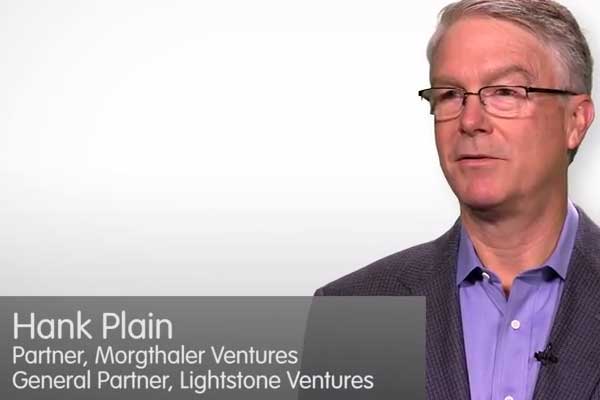Getting Started
Developing a medtech funding strategy can be challenging and complex. The following steps can be used to begin the process of analyzing funding requirements and investors from the viewpoint of the innovator.
Identify Comparable Companies
What to Cover
Investors look at historical information, in conjunction with current information, to predict financial trends for a business. Since start-ups lack historical financial data, the next best source of information comes from comparable companies. As noted, comparable companies, or proxy companies, are those whose operations resemble what is required to commercialize the innovator’s idea. After reviewing proxy company selection criteria and the corresponding analysis that has been completed in chapter 6.1, take the investor’s perspective to scrutinize these examples from a funding perspective. Consider what lessons can be learned from the funding strategies taken by the proxy companies, as well as what risks can be avoided. Anticipate what questions investors might ask based on the experiences of these companies. When approaching individual investors, it is also important to understand which companies they think are the most appropriate comparables based on their personal experience and thus may require additional analysis.
Where to Look
- Other Chapters –Review 6.1 Operating Plan & Financial Model and 6.2. Strategy Integration & Communication.
- Yahoo Finance – This website aggregates the financial data of public companies. By looking up a known public competitor, a hyper-text link in the left-hand column leads to a web-page of “Competitors.”
- VentureXpert – The functionality of VentureXpert is now available through Thomson ONE on a subscription basis. This source provides data on mergers and acquisitions, initial public offerings (IPOs), and venture capital funding based on data from Securities Data Corporation. Users can search the database to find detailed information about private start-ups including funding, investors, and executives.
- VentureSource – Another subscription database that contains detailed information about private start-ups including funding, investors, and executives.
- Hoovers Online – A database of product profiles for companies, which includes competitors.
- Securities and Exchange Commission – SEC filings for companies that have filed or gone public include a great deal of valuable information.
- Handouts from Conferences – The booklets that are handed out with conference registration at events such as the annual JP Morgan Healthcare Conference sometimes include profiles of private companies.
Confirm Funding Milestones and Capital Needs
What to Cover
To select funding milestones, start by reviewing the operating plan developed as part of the business planning process. Compare the operating milestones in that document with the operating and financing milestones analyzed from proxy companies. At this point in the process, similarities should exist between the business plan milestones and those of comparable companies. The most critical part of selecting financing milestones is to identify significant risks for the start-up and determine how these risks may differ from those of other comparable start-ups. Once funding milestones are selected, characterize the overall process by describing the number of rounds of funding needed, the average amount of each round, and the average duration between milestones. When determining the amount of capital and time needed to reach each funding milestone, again consider the plan laid out in the operating plan. Also take into account potential deviations from the plan and build in an appropriate cushion. Use the comparable company that has already been studied to check these estimates. As a final check of the funding milestones and capital needs, talk to seasoned innovators and investors.
Where to Look
- VentureXpert
- VentureSource
- Other Chapters –Review 6.1 Operating Plan & Financial Model.
Determine a Company Valuation
What to Cover
Assessing valuation is critical to splitting the value, ownership, and control of the company between the founders, previous round investors, and the next round of investors. Begin by discounting the terminal value for the company and then perform a comparables analysis as described in the Valuation, Dilution, and Ownership section of this chapter. Once the pre- and post-money valuations for each round are calculated, determine the percentage ownership of each stakeholder. Then, take into account the many other factors that can influence the final numbers (e.g., experience of the team, competitive threats, investor interest in the specific space, macroeconomic market conditions).
Where to Look
Research and Select Investors
What to Cover
Based on the company’s stage of development, consider the different types of investors, as well as the advantages and disadvantages of each type of funding. Then, determine from which types of investor(s) to seek funding. Research specific companies (or individuals) to assess the potential fit between the business and the investor’s interests and requirements. Carefully assess the track record and the reputation of these investors to avoid entering into discussions with those who may inadvertently disclose confidential information to potential competitors.
Where to Look
- Online Directories – Online investment directories can provide basic information to those seeking funding. vFinance.com, VCgate, and Inc.com’s Angel Investor Directory are examples of the many online listings that may be useful. Some are available at no cost; others require a subscription.
- VentureXpert
- Venture Capital Firm Websites
Approach Investors
What to Cover
Many experts recommend starting with a group of 10 potential investors and keeping seven to eight active at any given time to help ensure the funding needs of the business are met. Whenever possible, leverage personal and professional connections to make introductions to potential investors. Follow up with a well-articulated elevator pitch. Be prepared to present a business plan and prototype shortly thereafter. Decide ahead of time how much the team is comfortable disclosing and be open about disclosure limitations. Most investors may refuse to sign a non-disclosure agreement (NDA), so innovators need to have provisional patents submitted and all trade secrets well protected. In general, raising funds is more challenging than many investors anticipate, taking up to 12 months or longer for each round.
- Where to Look –
- Personal Network –Be diligent, assertive, creative, and professional in seeking referrals to appropriate investors.
- Service Providers – Lawyers, accountants, consultants and other professional service providers with whom an innovator has worked can be an excellent source of referrals.
- Other Chapters –See 6.2 Strategy Integration & Communication.



